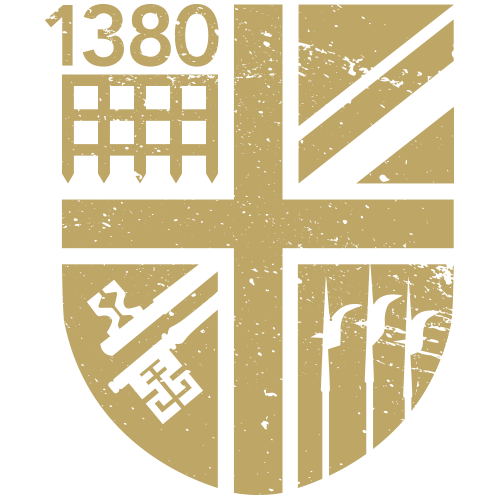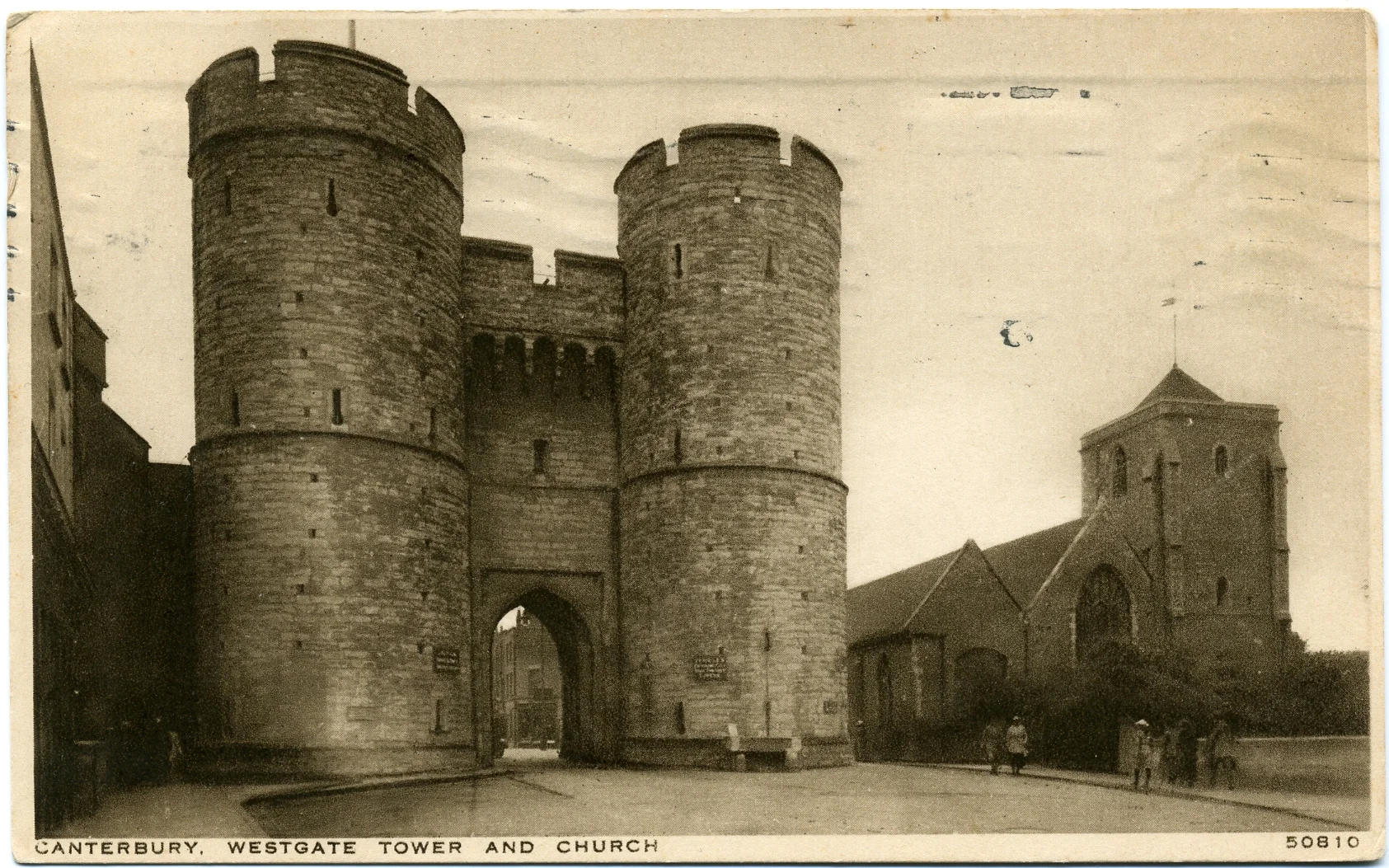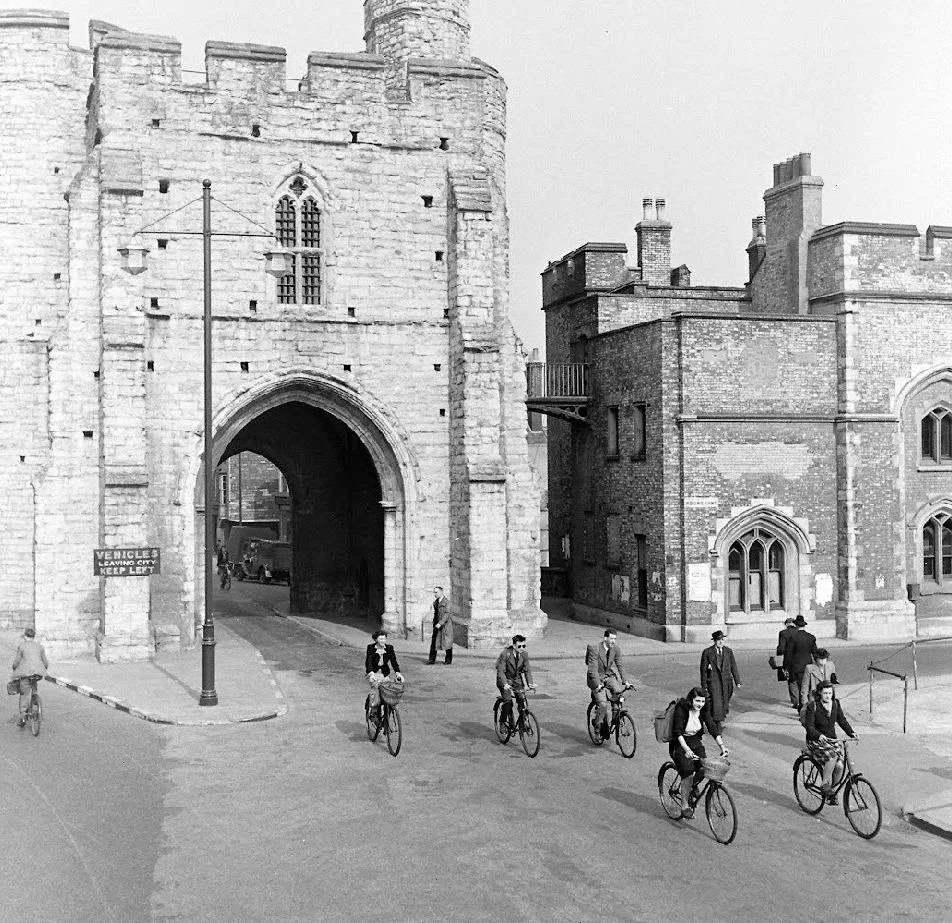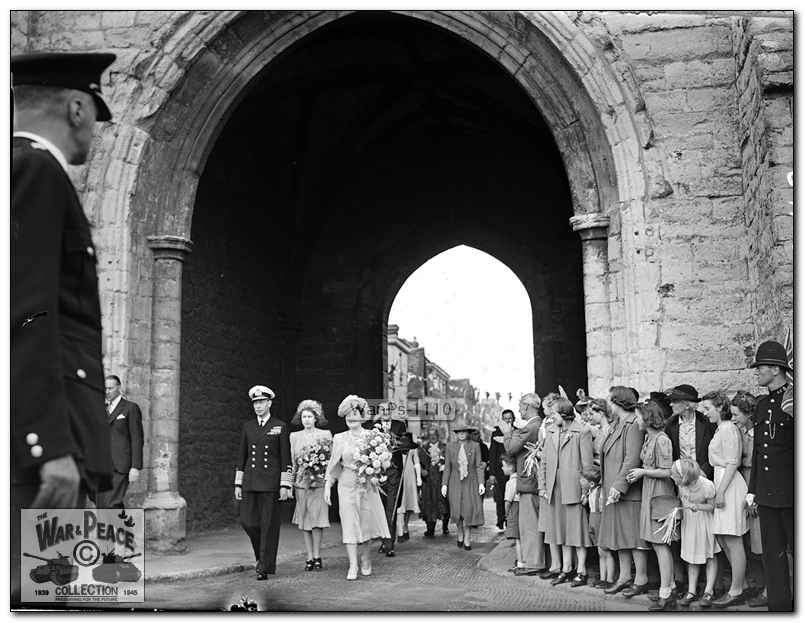History
Welcome to the story of England’s largest surviving medieval gateway. This pair of fine old buildings is steeped in English history. The key to their survival has been remarkable adaptability, each changing to meet the needs and wishes of successive generations, explored here in one of the most interesting small museums in south-east England!
Westgate Towers
The largest and arguably the finest of the country’s surviving medieval gateways was built during the 100 Years’ War to defend Canterbury from foreign incursion, and to demonstrate the city’s wealth and importance. The 60-foot (18m) stronghold did not stand alone, as it does now, but was approached over a drawbridge and flanked by impressive walls.
Time passed, the military threat lessened, and Westgate was converted into the city gaol. This function, too, came to an end; after a brief period as an archive, it became a museum at the start of the 20th century. Brought back into active service in both World Wars, it played a crucial role in the city’s air defences. Sixty years later, dedicated private investors undertook to bring the museum up to date, fashioning a spectacular window into the history of our city and nation, now open for you to enjoy!
One Pound Lane
The Towers’ younger sibling, has proved no less flexible. Following condemnation of the foul conditions inside the gateway, it was constructed in the early 19th century as a new extension to the gaol, linked to the old one by an iron bridge. When the gaol closed half a century later, the building became a Police Station (with new cells), then Kent Music School. Finally, in the 21st century it was rescued from its dilapidated state and converted into the delightful heritage complex you see today.
Images & Restoration
If you know the origin or date of any of the collection of images please feel free to contact us and we will update the details on the picture label. Our phase of the restoration of One Pound Lane took place between 2015-2018, revealing many of the original features & finishes and introducing contemporary British design to the interior. The new river bridge was installed in 2016.
Timeline
1380 Westgate Towers built as a gateway & defensive structure
1453 Westgate Towers becomes city gaol
1829 Gaol extension & Gaoler's house built
1870 Canterbury city police station opens
1907 Police station extension (Parade Room & Cells)
1943 Canterbury City Police become part of Kent County Constabulary
1965 Police station moves to Old Dover Road
1966 Kent Music School opens
2011 City Gaol Cafe opens
2014 One Pound Lane opens
LEARNING RESOURCES
Historical
Restoration
Stories Of Note
One Pound Lane is home to many unique stories from its 600 years of history, we're delighted to share these highlights & resources with you and hope you can come and visit the Westgate Towers to explore some of these stories for yourself.
HISTORY DISCS
Located throughout One Pound Lane is a series of black wall mounted History Discs telling the story of each room throughout history. The history discs are in memory of Charles Lambie who restored parts of the building to its former glory.
Gun loops
The Westgate contains England's first gunloops - the keyhole shapes in the round towers designed specifically for cannon. As the Westgate was built on the orders of the Archbishop of Canterbury, Simon Sudbury (1316-1381), who was also serving as Lord Chancellor and was therefore responsible for the defences, it is perhaps not a coincidence to find Canterbury having the best protections of the day. The cannon were primitive, with a range of only about 200 yards, and the angles of the gunloops from where they could be fired were not perfect, but it was still a major step forward in warfare. Despite this advance, there were also the more traditional "murder holes" for pouring rocks or hot liquid onto attackers. When the building was in use as the prison the gunloops were boarded over, making the rooms pitch black at night and preventing any escapes, although in the early Victorian period they were sometimes used to allow some light and fresh air into the prison.
other prisoners of note
Another remarkable prisoner held in the gaol was John Nichols Thom (1799-1838), an eccentric Cornishman who arrived in Canterbury in 1832 and claimed to be "Sir William Percy Honeywood Courtenay, Knight of Malta". His awesome bearded appearance and fiery speeches attracted a swell of support, but instead of being elected to Parliament as he hoped, he found himself imprisoned in the Westgate Gaol on a charge of perjury. During his stay, his supporters constantly gathered outside the Westgate threatening to storm the prison and break him out. Sir William though assured them that he "had had kind and humane treatment" from gaoler William Wellard. He passed the time in prison writing the fifth edition of his rabble-rousing pamphlet The Lion. After leading a few followers around the Kentish countryside, he shot and killed a local constable, and was later himself killed following a stand-off with the local militia in the woods at Boughton, near Faversham.
the three felons farewelL
From the archives of the Kentish Post (the forerunner to the Gazette) a few lines written by three inmates of the Westgate Gaol in 1726. It is not know what crime they had committed, they had been condemned to be hanged, and were only reprieved because King George I happened to visit the city that week and agreed to answer a petition commuting their sentences to transportation to America for 14 years. Whilst waiting for their transport to arrive to take them to Gravesend and the prison vessel, they composed the following lines and sent them via letter to the editor of the paper.
The Three Felons Farewel [sic] to Canterbury.
Adieu, thou Friendly City, Canterbury;
Adieu all Hopes again of being merry.
Adieu you generous Housekeepers and Wives.
Sure never Villains led such happy Lives.
Adieu all dainty Dishes, roast and boil'd;
Adieu all curious Drams, Beer stale and mild;
Adieu to all the Blessings we've enjoy'd,
Instead of Wanting we have been o'ercloy'd.
So now 'tis fit that we to Sea shou'd go,
And take for Health a gentle purge or so.
Sure never Rogues of half so deep a dye,
Made so many tender hearted Damsels cry,
"Rather than such brisk Fellows hang'd shall be
We'll marry 'em naked under the fatal Tree."
But thank kind Fate (not Justice) we're sav'd
From such a Doom altho' we are enslav'd.
And if we meet with any of our Friends,
We'll send 'em here to make you some amends.
The three prisoners were William Smith, James Leak, and Robert Elson. It's rare you get a personal touch, however small, from so long ago!
PRIsONERS OF NOTE
In the political upheavals of the 16th and 17th centuries there were a number of "political prisoners" held in the Westgate. These included John Stone, a member of the Whitefriars, who refused to swear the Oath of Supremacy to King Henry VIII and who was executed in 1539. Between 1555 and 1558, several of the "Protestant Martyrs" imprisoned under Queen Mary were held in the prison before being burnt. One of the Westgate's best-known prisoners was Robert Cushman (1578-1625), a Canterbury grocer of Puritan beliefs, who was arrested in 1603 for printing "libels" - anti-church literature - against the Cathedral authorities. Refusing to apologise at a church court, he was imprisoned for a week in the turrets of the Westgate. After this experience, he and his friends made plans to leave the country; it was Cushman who in 1620 hired the Mayflower ship to take the "Pilgrim Fathers" to America, his son Thomas later becoming Ruling Elder of Plymouth Colony in Massachusetts.
Earliest flushing toilets & electricity
Prison reform came late to Canterbury but the new prison building at One Pound Lane had some of the earliest flushing toilets in the country, and these still survive. Each night-cell was supplied with a toilet behind its door, although the flushing valves were all in the corridor outside, meaning that the toilets could only be flushed by either the gaoler or his two assistants. All the pipes were fed by communal water tanks which had to be supplied from the nearby river, and one of the prison day rooms had a pump installed so that a task for the prisoners would be to pump the water up from the ground floor into the above tanks. A proper "wash room" was another addition to the new prison building. Another "first" for One Pound Lane was it being one of the very first Canterbury buildings to be supplied with electricity, when it was in use as the Police Station in the 1890s; the electric "pillar", from where the power was obtained, can still be seen outside.
ESCAPE ATTEMPTS
There have been many escape attempts - both successful and unsuccessful - from the prison in the Westgate over the years. The first recorded escape was in 1478 when prisoners managed to wriggle through one of the cell gunloops; these were subsequently all boarded up. In 1503 prisoners made an escape by attacking the gaoler with red-hot coals from the fireplace. In later years, the escapes got even more daring; in 1808 a prisoner somehow procured a saw from somewhere and simply cut through the wooden boards around his cell, and in 1828 a prisoner used his blankets to lower himself down to the street. A particularly daring escape in 1868 involved jumping from the battlements into a passing hay cart! Not all the escape attempts were successful; a prisoner in 1823 broke a leg after trying to climb down the side of the tower, and in 1844 another broke his foot when jumping from the iron footbridge down onto the ground.
Magna Carta maquettes
The museum inside the Westgate opened in 1906 and some of its first exhibits were a remarkable set of Victorian plaster maquettes ("sketch models") of several of the Barons whose names had appeared on the 1215 Magna Carta. They were part of the design for the recently rebuilt House of Lords, and were made in the 1840s by some of the country's most important sculptors. These included Thomas Thornycroft (1815-1885), designer of Boudicca and her Daughters on Westminster Bridge, and Patrick MacDowell (1799-1870), who later worked on the Albert Memorial in Kensington Gardens. After being sent away to a plating firm in Birmingham, from where the final versions were cast in bronze, the maquettes were purchased for the new Westgate museum by Canterbury's mayor (and honorary museum curator) Francis Bennett-Goldney (1865-1918), probably because one of the figures was of Stephen Langton, the Archbishop of Canterbury. That particular maquette is now in the city's art gallery, but many of the others can still be seen in the Westgate, arranged around what was once the debtors' prison cell. The sixteen statues of the barons and two bishops can be seen in The Lords Chamber at the Palace of Westminster.


































































